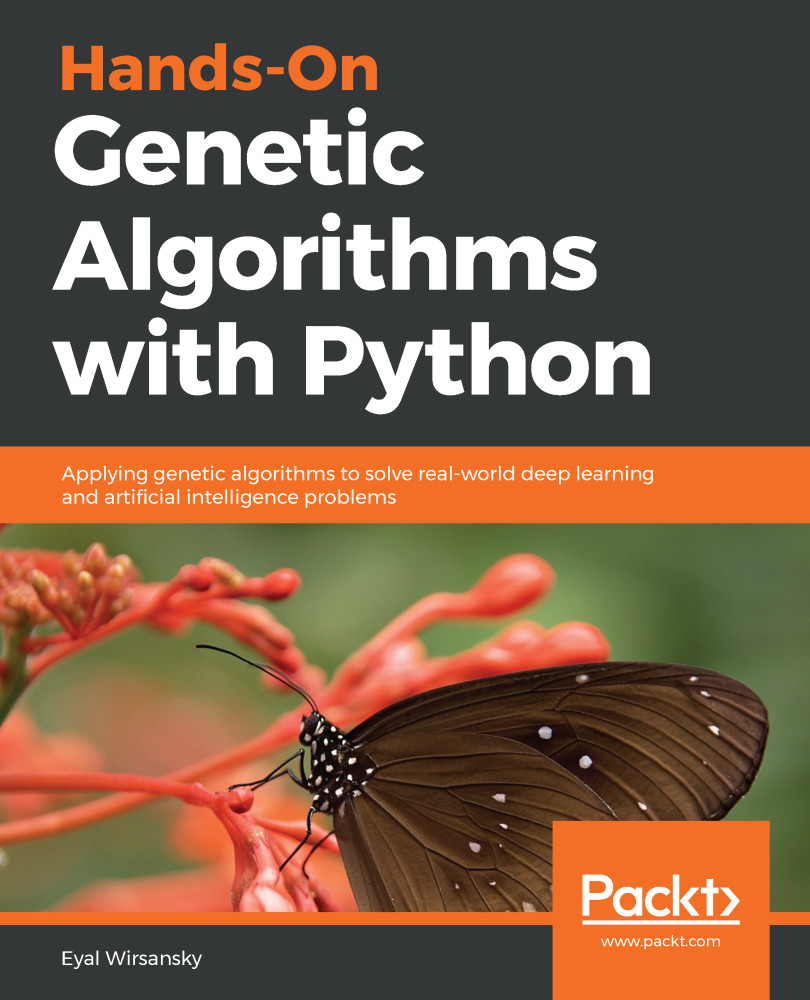In this chapter, we started by introducing genetic algorithms, their analogy to Darwinian evolution, and their basic principles of operation, including the use of population, genotype, the fitness function, and the genetic operators of selection, crossover, and mutation.
Then, we covered the theory underlying genetic algorithms by going over the building-block hypothesis and the schema theorem and illustrating how genetic algorithms work by bringing together superior, small building blocks to create the best solutions.
Next, we went over the differences between genetic algorithms and traditional ones, such as maintaining a population of solutions and using a genetic representation of the solutions.
We continued by covering the strengths of genetic algorithms, including their capacity for global optimization, handling problems with complex or non-existent mathematical representations and resilience to noise, followed by their weaknesses, including the need for special definitions and hyperparameter tuning, as well as the risk of premature convergence.
We concluded by going over the cases where the use of a genetic algorithm may prove beneficial, such as mathematically complex problems and optimization tasks in a noisy or ever-changing environment.
In the next chapter, we will delve deeper into the key components and the implementation details of genetic algorithms in preparation for the following chapters, where we will use them to code solutions for various types of problems.
 United States
United States
 Great Britain
Great Britain
 India
India
 Germany
Germany
 France
France
 Canada
Canada
 Russia
Russia
 Spain
Spain
 Brazil
Brazil
 Australia
Australia
 Singapore
Singapore
 Canary Islands
Canary Islands
 Hungary
Hungary
 Ukraine
Ukraine
 Luxembourg
Luxembourg
 Estonia
Estonia
 Lithuania
Lithuania
 South Korea
South Korea
 Turkey
Turkey
 Switzerland
Switzerland
 Colombia
Colombia
 Taiwan
Taiwan
 Chile
Chile
 Norway
Norway
 Ecuador
Ecuador
 Indonesia
Indonesia
 New Zealand
New Zealand
 Cyprus
Cyprus
 Denmark
Denmark
 Finland
Finland
 Poland
Poland
 Malta
Malta
 Czechia
Czechia
 Austria
Austria
 Sweden
Sweden
 Italy
Italy
 Egypt
Egypt
 Belgium
Belgium
 Portugal
Portugal
 Slovenia
Slovenia
 Ireland
Ireland
 Romania
Romania
 Greece
Greece
 Argentina
Argentina
 Netherlands
Netherlands
 Bulgaria
Bulgaria
 Latvia
Latvia
 South Africa
South Africa
 Malaysia
Malaysia
 Japan
Japan
 Slovakia
Slovakia
 Philippines
Philippines
 Mexico
Mexico
 Thailand
Thailand

















